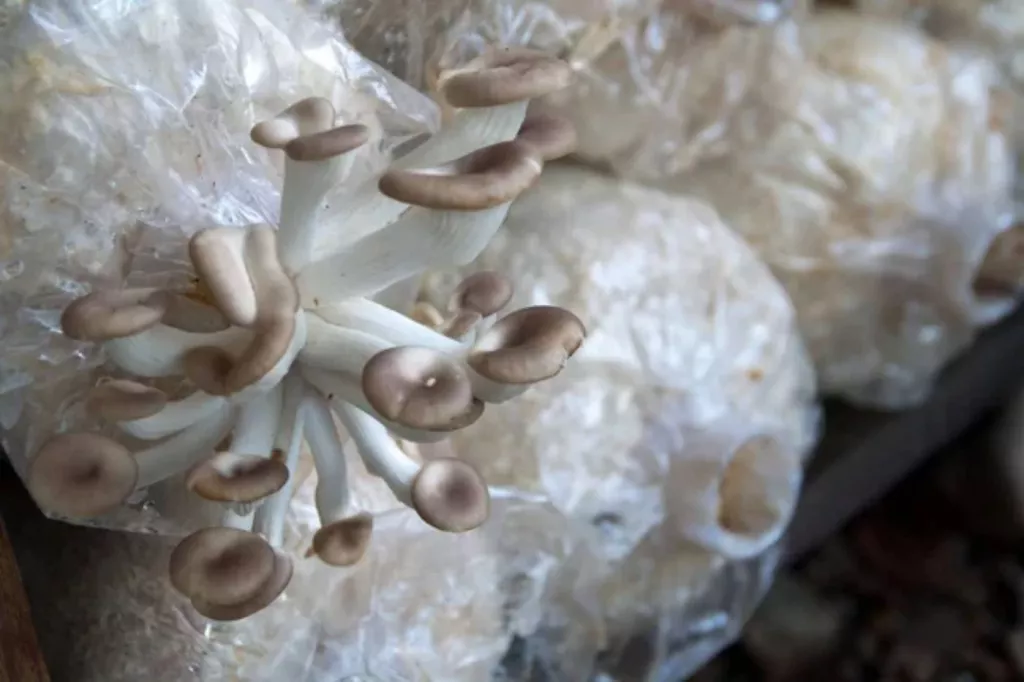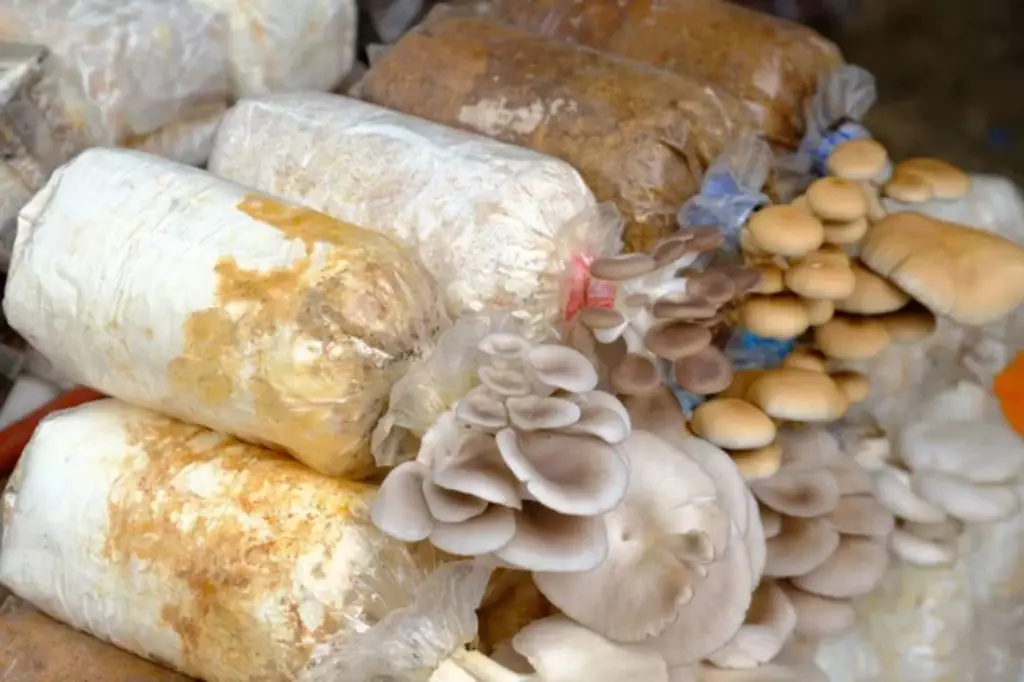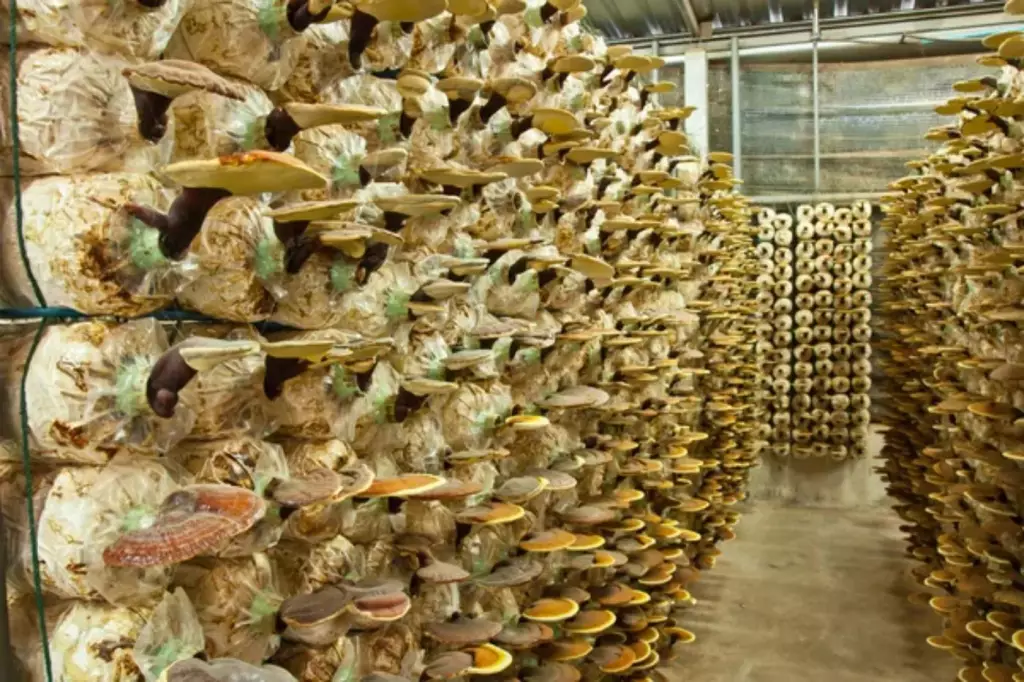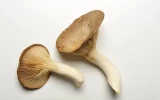When Is Mycelium Ready to Fruit and How to Trigger It?
The fruiting stage is one of the most crucial phases in the timeline of mushroom growth, as this stage will define the success of your growing process. For this reason, you must be able to tell when your mycelium is ready to fruit and how to trigger it to produce healthy mushrooms.
The mycelium is ready to fruit if the substrate block is uniformly covered in an off-white color. The block will be firm, with no mycelium coming off and no visible bare spots. To trigger fruiting conditions, provide high humidity, ideal temperature depending on species, good air exchange, and enough light.
It is essential to know if your mycelium is ready to fruit so you can set the right fruiting conditions. Let's go into a more detailed explanation of how to tell if your mycelium is prepared to fruit so you can assess your mushroom growth.

Summary
- You can tell your mycelium is ready to fruit if it has fully colonized your substrate block and the block exhibits characteristics such as being uniformly covered in white mats, being firm when touched, not coming off when shaken, and having no visible bare spots.
- To induce fruiting conditions, you can grow in mushroom bags or transfer the ready-to-fruit blocks into a grow house, a humidity tent, a monotub, or a fruiting chamber.
- Whichever method of inducing fruiting you choose, the triggering factors for fruiting must be considered, such as providing enough light, good air circulation, high humidity, and an ideal temperature per mushroom species.

On this page:
You Can Tell Mycelium is Ready to Fruit with the Substrate Block
Mushroom mycelium can grow and fully colonize a substrate within 7 days given the right conditions. Their growth starts during inoculation, followed by germination and mycelial expansion. They continue to grow and form a network of hyphae, which is exhibited as thick and dense white mats covering the substrate.
From day 7 onward, the mycelium will already have colonized a significant portion of the substrate. This is a delicate time in the growth of the mycelium, because at this stage the mycelium is already preparing for the fruiting stage, and if left unchecked, the mycelium may undergo the reproductive phase.
For this reason, knowing what to look for that signals that the mycelium is ready to fruit is important. They provide the key to knowing what factors to adjust to encourage the healthy production of mushrooms.
Below are some indications that the mycelium has fully colonized the substrate and is ready to move on to the next phase:
- The block is completely and uniformly covered in white or off-white color. There should be no brown, blue, or green spots showing.
- The block is firm and slightly springy
- No mycelium should come off if the block is shaken
- There should be no visible bare spots
- There are visible pinheads forming which look like fluffy layers form at first

Understanding what the mushroom mycelium looks like and what its role is in producing the fruiting bodies or the actual mushrooms that we see is key to determining the signs of when it has fully completed the colonization process and is now ready to fruit.
The mushroom mycelium acts as the root system of the mushrooms. They are a dense mass of thread-like or web-like tissue filaments that spread into the substrate. The role of the mycelium is to search for food sources and digest the organic matter to collect nutrients that will contribute to mushroom growth later.
Let's Trigger Mycelium to Fruit with the Right Conditions
Once the substrate has been fully colonized by the mycelium, you will have to decide how to proceed with the fruiting process. Fruiting is the process of producing “fruit bodies”, which are the actual mushroom themselves.
A few environmental factors can trigger fruiting. Ensuring that these factors are in the correct range will allow your mushrooms to fruit without encountering problems.
Below is a table showing the different fruiting conditions needed to be set for different mushroom species:
| Mushroom species | Ideal Fruiting Temperature | Ideal Fruiting Humidity | Other Fruiting Conditions Required |
|---|---|---|---|
| Oyster mushrooms | 60°F to 70°F | 85 – 95 % | Partial light exposure |
| Button mushrooms | 53°F to 60°F | 90% | Needs complete darkness |
| King Oyster mushrooms | 59°F–65°F | 85 – 95 % | Fresh air exchange rate of 5 to 10 air exchanges per hour, CO2 level of 1,000 to 1,500 ppm, and artificial light exposure of 12 to 16 hours per day |
| Shiitake mushrooms | 45°F and 65°F | 65 – 85% | Fresh air exchange rate of 5 to 8 air exchanges per hour and partial light |
| Maitake mushrooms | 55°F to 65°F | 85% - 90% | No need for sunlight exposure, needs good air circulation |
| Lion’s mane mushrooms | 65 and 75°F | 85 – 95 % | Maintain a CO2 level of about 500 to 1,000 ppm and ensure 5-8 fresh air exchange rates per hour to achieve the fluffy pom-pom appearance |
Deciding whether to leave the substrate in the bag or move it to an external location is part of achieving certain fruiting conditions. Below are some of the ways that you can do to create the right conditions for fruiting:
-
If you decide to leave the substrate as it is in the growing bag, you can induce fruiting by cutting a hole in the bag or opening the top of the bag; for shiitakes, the bag must be completely removed, and the colonized substrate must be misted.
-
Building a grow room or a fruiting chamber: you can do this by creating shelves using 2x2 wood, plastic sheets, a humidifier, and a fan, or you can build a grow house using banana leaf which is also a mushroom substrate.
-
Creating a terrarium made of a Sterlite bin with holes and a layer of moist perlite. There should be holes at the bottom of the bin and the whole terrarium should be elevated off the ground until fruiting happens.
-
Creating humidity tents, even a simple one using a clear plastic "umbrella" with holes for airflow and chopsticks for support. This should be misted twice a day.
-
If you decide to fruit your mushrooms on a mono tub, the optimal temperature range you should maintain should be between 68-75°F. The optimal fruiting conditions for growing different species of mushrooms on monotub can be found in this article.

Whichever method you decide to utilize from the list above, the goal is still the same: first is to let the mycelium know it has reached the surface by providing light and fresh air.
Second is simulating autumn-like conditions to let the mycelium know it’s a suitable environment for fruiting. You can do this by lowering the temperature and increasing the humidity.
Although some mushrooms like oyster mushrooms will start producing pins as soon as they have colonized the substrate, some mushrooms need more specific conditions to fruit. Some of these specific conditions needed to trigger fruiting are the following:
- High humidity: Most species prefer a relative humidity of 80 to 95% to fruit.
- Ideal temperature for fruiting depending on mushroom species.
- Good air exchange: can be done by lowering CO2 levels and providing fans.
- Sufficient light – some species only require indirect sunlight exposure or artificial lights to induce fruiting, with button mushrooms being an exception as they prefer darkness throughout their growth.



